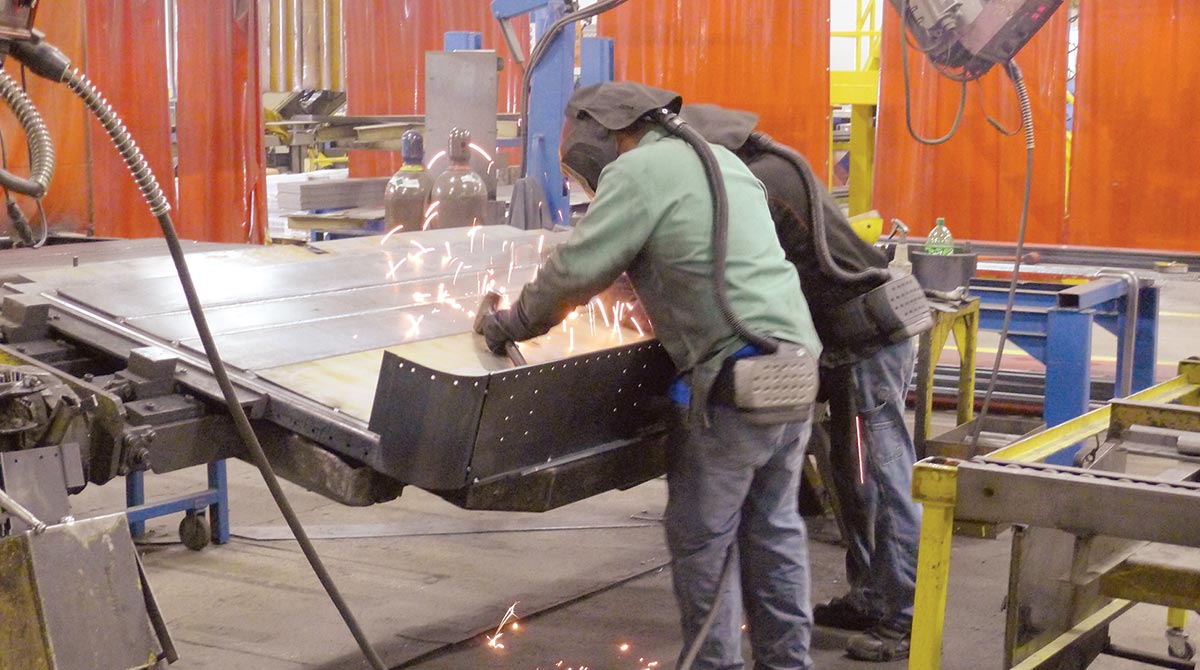Senior Reporter
Trailer Designs for Final-Mile Deliveries May Evolve With E-Commerce Expansion

This story appears in the June 12 print edition of Transport Topics.
FORT WAYNE, Ind. — Ideas for how trailer designs could evolve to address growth in final-mile deliveries compelled by e-commerce were a topic of discussion at Strick Group’s 2017 Trailer Symposium and Open House here.
“I think the important thing is, as the freight industry changes, we need to be constantly asking ourselves, ‘Is what we are doing as far as equipment the best way to do it, or is there a better design, something more efficient and better for the driver?'” said Mike Palmer, vice president of fleet services at Estes Freight Lines, which has been a Strick customer for about 15 years.
The event was held June 6-8 to commemorate the trailer maker’s 80th anniversary, and featured a production plant tour and panel presentations on e-commerce, final-mile deliveries and the still-strong economic expansion.
The U.S. Commerce Department in May estimated U.S. retail e-commerce sales for the first quarter of 2017 totaled $98.1 billion, up 14.8% compared with the first quarter of 2016. E-commerce sales in the recent first quarter accounted for 8.4% of total sales.
“Last year, we made over 800,000 residential deliveries in 40 markets, and that’s growing weekly,” Palmer said, adding Estes has been in the final-mile business for about 15 years “in some form or fashion with a lot of experimentation.”
Estes ranks No. 14 on the Transport Topics Top 100 list of the largest U.S. and Canadian for-hire carriers. It operates 6,500 tractors and 27,000 trailers.
Its average final-mile shipment weighs 350 pounds; over 50% of them are still palletized, he said.
But lately, Palmer has been talking with Strick about a “pure pickup-and-delivery” concept for a trailer intended to improve final-mile delivery options for Estes’ customers, which include several leading big-box stores and Amazon.com.
“We were looking at a drop deck, doors probably on all sides, including the rear. It would probably be a single axle, with ramps, and possibly a hydraulic system to get the back end of the trailer up to the height of the dock,” Palmer said of the new concept.
Other features could include backup cameras, an easy in-and-out for the driver, making the trailer lower to the ground, adding security features, plus better visibility to see inside the trailer as well as lighting of the surrounding area, he said.
“We can do 100 or 200 [of the same trailers]. Or one, two or three [unique] trailers,” Jim Gazdick, Strick’s vice president of operations, said during a tour of Strick’s trailer plant in nearby Monroe, which now includes a separate line for limited-run special projects.
ACT Research Co. President Kenny Vieth told attendees at the symposium that the number of new dry vans is at a near-record level when compared with the total population of dry vans, but he did not supply figures.
Vieth also noted that the number of trailers built in 1998 and 1999 that are likely candidates for replacement soon is down to about 120,000 units.
Stifel, Nicolaus & Co. analyst Michael Baudendistel in April upped his 2017 industry production estimate to 275,000 trailers from 265,000 “to reflect our expectation that orders will remain above prior-year levels in the coming months,” he wrote to investors.
Meanwhile, the overall economy continues to grow. Experts peg the current expansion that has continued for 96 months as the third- longest in the nation’s history, dating to 1854. The longest expansion was 120 months and ended in 2001. The second-longest was 106 months.
“We see no reason for the econ-omy to roll over anytime in the next five years,” Vieth said.
What kills expansions is bad monetary policy at the federal level; an 80-month expansion has as much potential longevity as does a 40-month expansion, he said.




